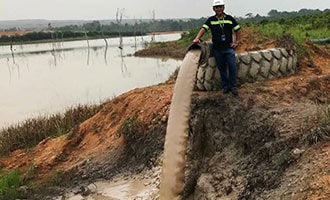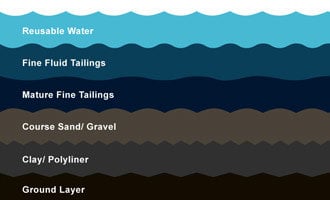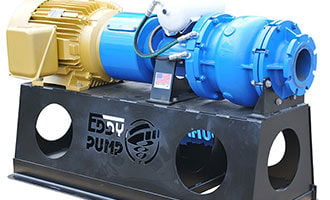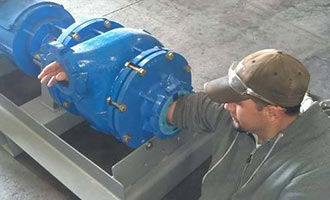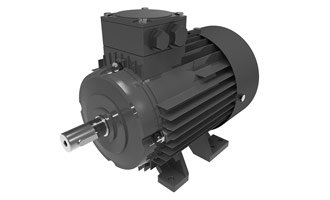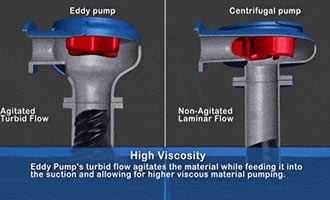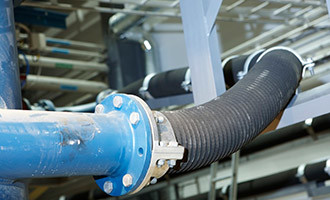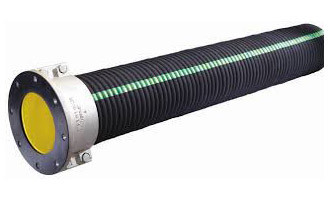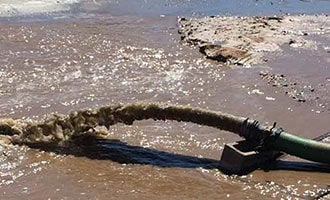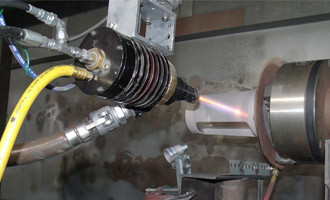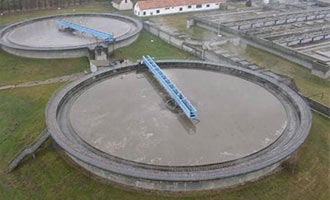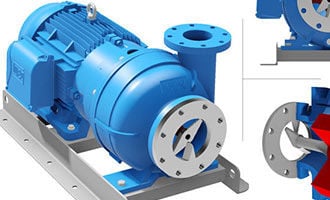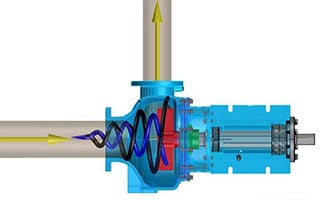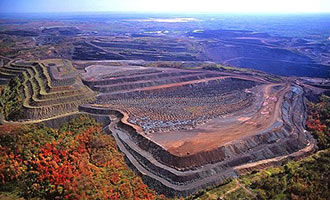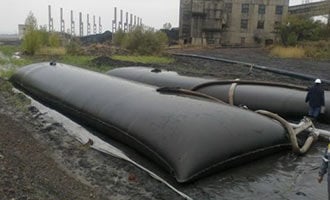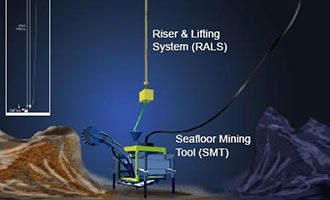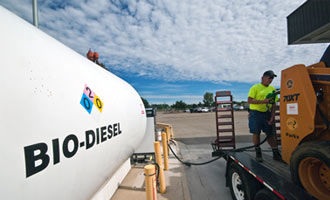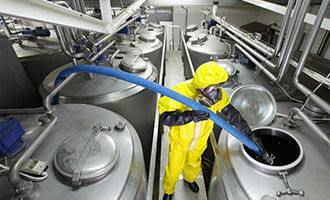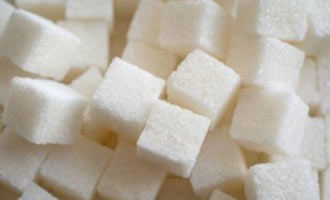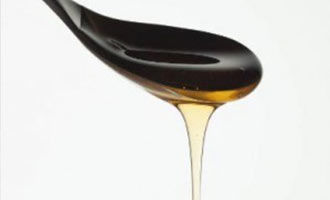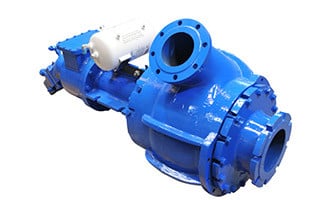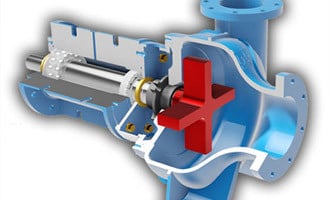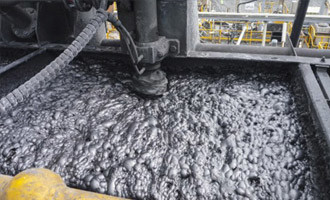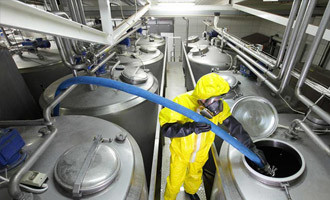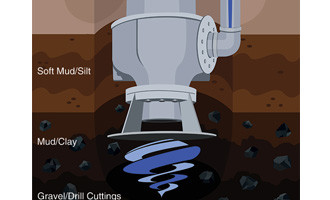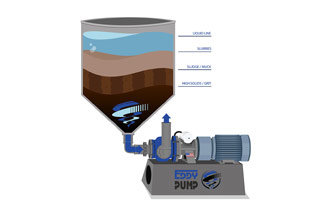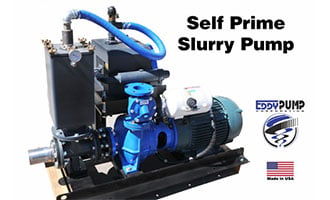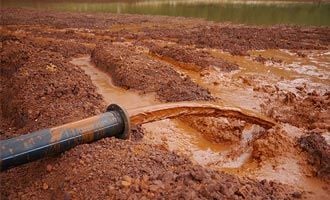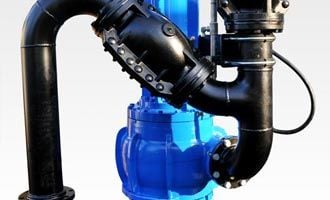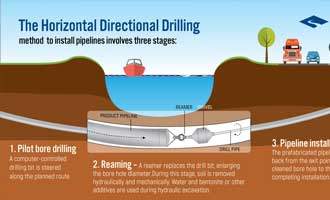Lime Slurry Pump
Lime slurry can be an unforgiving material to pump because it is inherently abrasive, corrosive, has high particulate, and high viscosity. Learn how the EDDY Pump is a top choice for lime slurry pumping.
The EDDY Slurry Pump was designed to excel in the harshest applications and makes it a superior pump for lime slurry applications. The large internal flow path enables the pump to pass extremely large solids, and the recessed rotor reduces the potential for wear due to the abrasive nature of lime slurry. Added to this, the unique ability to provide a turbulent flow means that the operation of the EDDY Pump avoids allowing the lime slurry to settle at the bottom of the liquid path, which can decrease excessive limescale issues internal to the pump.
This article includes:
- What is Lime Slurry?
- Lime Applications
- How to Safely Pump Lime Slurry
- EDDY Pump for Lime Slurry
What is Lime Slurry?
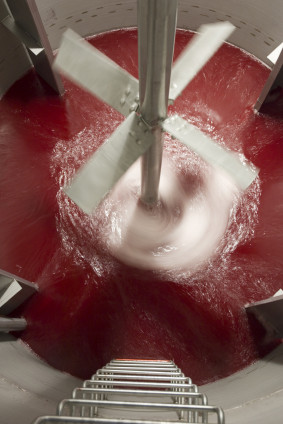
Lime slurry is also known by a number of other terms. Below is a list of some of the other terms for lime slurry. These terms should be used as a reference only.
- Limewater
- Calcium Hydrate
- Calcium Hydroxide
- Calcium Dihydroxide
- Milk of Lime
- Pickling Lime
- Hydrated Lime Slurry
- Portlandite
Lime Applications
The dominant construction-related use of lime is soil stabilization for roads, building foundations, and earthen dams. In addition, lime pumping applications can also apply to wastewater treatment. Lime is added to low-quality soils to produce a usable base and sub-base. Hydrated lime has long been acknowledged to be a superior anti-stripping additive for asphalt pavements. It also helps resist rutting and fracture growth at low temperatures, reduce age hardening, and improve the moisture resistance and durability. A recent study shows lime holds significant advantages over other additives for hot mix asphalt roads, including long-term cost savings and increased durability. Perhaps the oldest and most traditional use of lime has been in mortar and plaster, because of its superior plasticity and workability.
In regards to wastewater treatment, lime can be used as a far less expensive treating agent. This is because lime has the abilities to increase the alkaline content in water along with controlling bacteria growth commonly found in storage and aeration tanks. This lime slurry process also aids in the removal of manganese, fluoride, tannin, and iron from wastewater systems.
Lime (calcium hydroxide) Pump Applications:
- Lime chemical provides an economical solution for removing impurities in clean water, wastewater and sewage treatment processes. Also helps regulate pH control of acidic wastewater.
- Lime is also used in industrial plants where waste effluent must be neutralized prior to returning to the environment.
- A chemical solution containing lime is sprayed on to crops, typically citrus fruit and grapes as a pesticide.
- Lime is used to help with clarifying liquids in an assortment of food production applications.
- Paper/pulp production uses lime for both the production of sodium hydroxide and as part of the bleaching process and neutralization of acid wastewater.
How to Safely Pump Lime Slurry
Adding lime with water, as a slurry, allows the solution to be pumped considerable distances, making transporting the material easier than mechanically loading into trucks. As you can imagine, the lime slurry is not only corrosive but abrasive as well, which can pose challenges for all types of pumps. Due to these challenges, pump manufacturers are constantly coming up with new designs for reducing the detrimental effects that lime slurry can have on their equipment and production rates. Some of these design ideas are featured on multiple types of pumps including slurry pumps, centrifugal pumps, and peristaltic pumps. Typically, the answer to effectively pumping lime is to keep the fluid moving constantly to maintain the chemical in suspension. With lime slurry, it is important to constantly be reaching a critical line velocity in which there is enough flow and turbulence to prevent sediment from building up in dead spots or crevices found throughout the system. It goes without saying that cleaning limescale in pipes can be very labor intensive, expensive, and particularly in metal pipes. Ideally, the pipeline should be as smooth as possible with an open flow path, making sure the flow rate is directly proportional to maintaining momentum. This is why the EDDY Pump’s turbulent flow design is perfect for keeping the slurry agitated enough to not accumulate on the sides of the pipelines.
During the transportation of lime slurry, there can also be damage to the pipeline transporting lime slurries due to limescale buildup and abrasion at sharp elbows and bends. As a result, radius piping with long bends should be used to help counter this problem. In extreme cases, lime batch tanks can leak or rupture due to excessive pressure build-up. Operators now typically install pressure relief valves as a preventive measure. Another issue with storing lime slurry is the abrasive nature it exhibits in holding and mixing tanks. Most cases of abrasion damage to storage and mixing tanks problems stem from operators using FRP tanks for slurry preparation. However, corrosion resistant metal tanks should be used instead, greatly increasing the lifespan of the tanks.
Scaling in lime slurry piping is another problem caused by the escape of air into pipes (formation of calcium carbonate) and settling of solids during off cycles especially when smaller diameter slurry lines are used. Needless to say cleaning scale in pipes can be very labor intensive particularly in metal pipes. This problem can be minimized by recirculating the lime slurry through a “recirculation loop”, using flexible hoses for slurry transport inlet lines, minimizing the number of sharp bends using piping at least one and half to two inches in diameter and periodically flushing the lines with water. Keep in mind that even using larger diameter lines to lower pressure drop will not eliminate settling of the solids or reduction of flow so the easiest way to design a pipeline is to maintain non-settling conditions, similar to the design of dilute-phase pneumatic conveyors.
Lime is harmful when in contact with skin and eyes, making it very important to ensure the fluid is fully contained and not able to be splashed around. Lime chemical is strongly alkaline and very abrasive as the powder chemical format is insoluble in water and the particles will have a wearing effect on moving parts where there are constant friction and velocity. The EDDY Pump is a unique pump that outperforms other pumps when it comes to pumping abrasive and high viscosity lime slurries.
[/et_pb_text]Typical lime slurry application
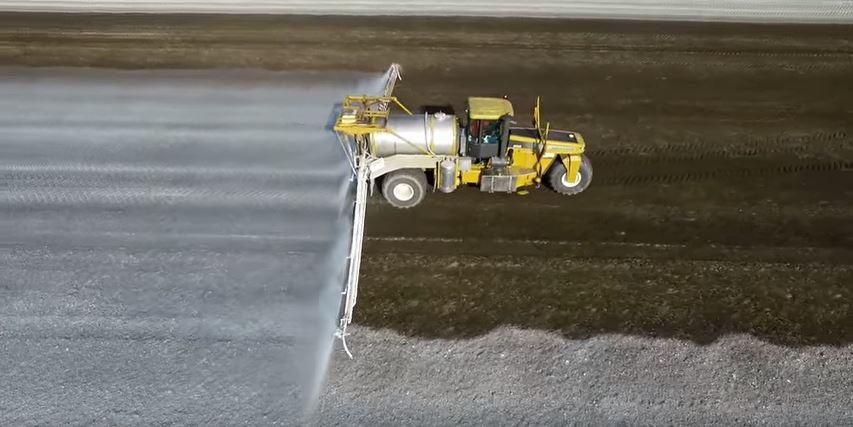
EDDY Pump for Lime Slurry
Using the EDDY Pump will provide several advantages when it comes to pumping lime slurries. For one, EDDY Pump is designed with a recessed rotor that comes in minimal contact with the slurry, helping to prevent wear to this critical pump component. The recessed rotor also allows for abrasive materials along with large sized solids to pass through without clogging or otherwise getting stuck in the pump. Additionally, the EDDY Pump will provide enough turbulence and flow to ensure the slurry does not settle at the bottom of the pipeline creating excessive limescale issues.
Best Applications – Industries Most Served
The EDDY Pump Corporation is a premier manufacturer of pumping and dredging equipment. If you are pumping or dredging slurry, high solids, extremely viscous material, paste, high abrasives (sand & gravel) and material filled with solids, then you found the best suited product for the job. Go to: https://eddypump.com/ or Call Us!
Mining, Fly Ash, Coal Ash, Oil, Fracking, Gas, Wastewater, Pulp and Paper, Chemical, Energy, Water Municipalities, Irrigation, and Dredging Companies. For Access to Complete Product Line Go to: https://eddypump.com/products/
Order or Get Selection Help
Why EDDY Pumps Are Better – Highlights
This video shows how EDDY Pump transports high slurry and abrasive materials. Featured dredge pump equipment includes the Remote Operated Subdredge, Diver Operated Pump and a Excavator Attachment Dredge Pump.
Why EDDY Pumps Are Better - Highlights
This video shows how EDDY Pump transports high slurry and abrasive materials. Featured dredge pump equipment includes the Remote Operated Subdredge, Diver Operated Pump and a Excavator Attachment Dredge Pump.





